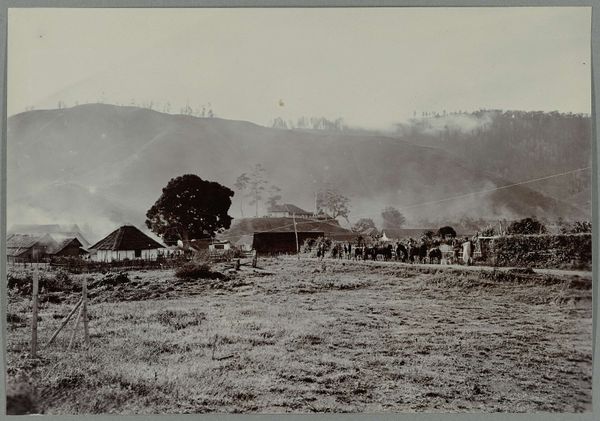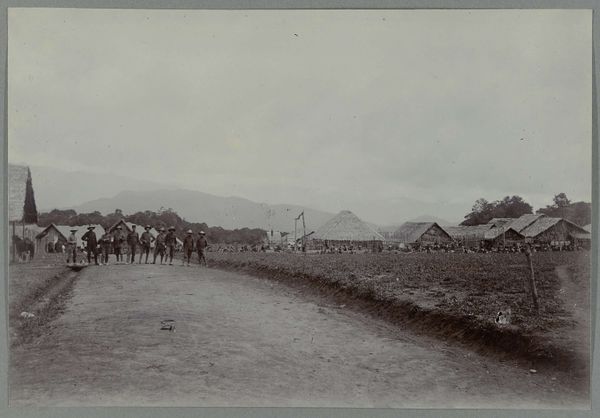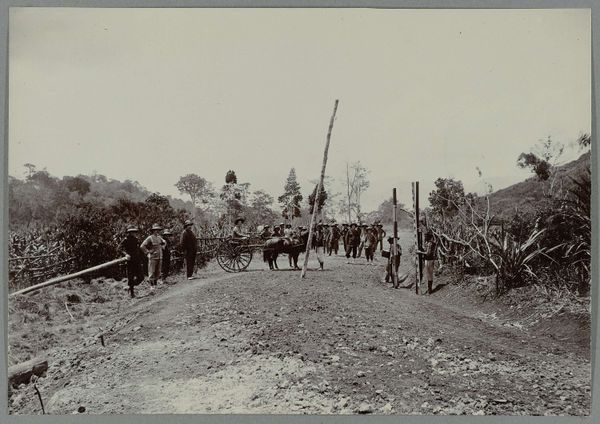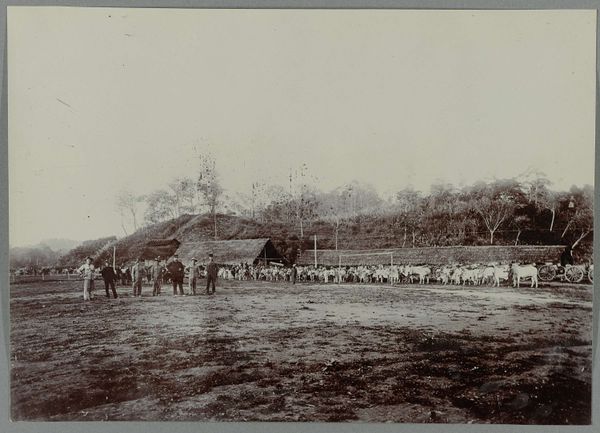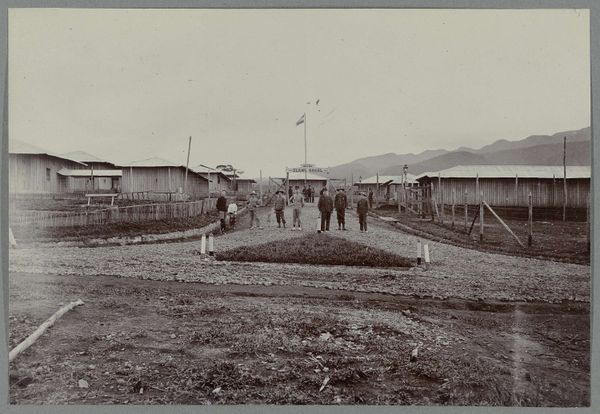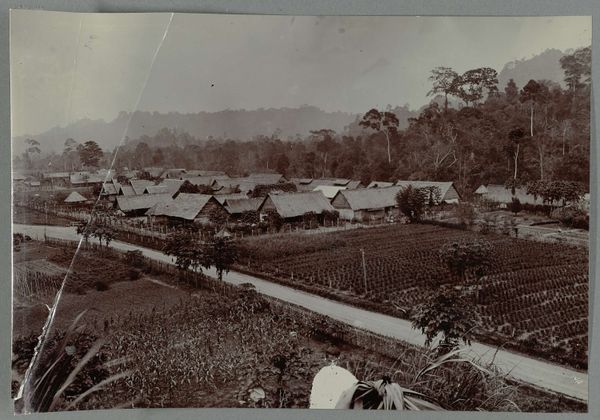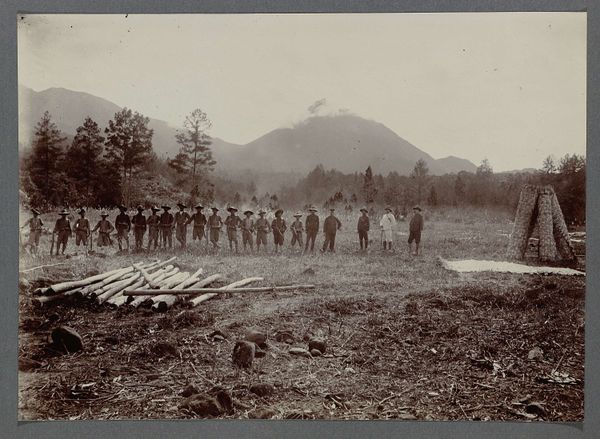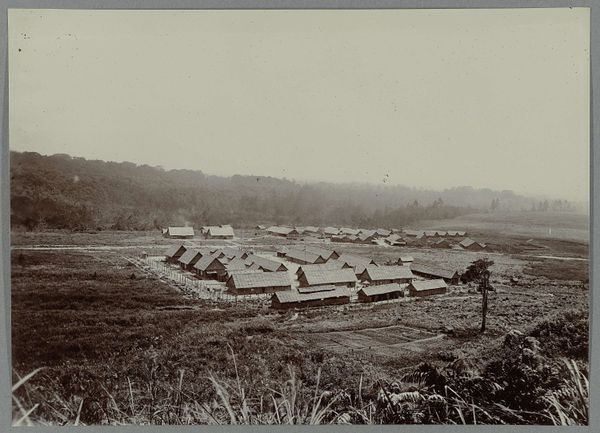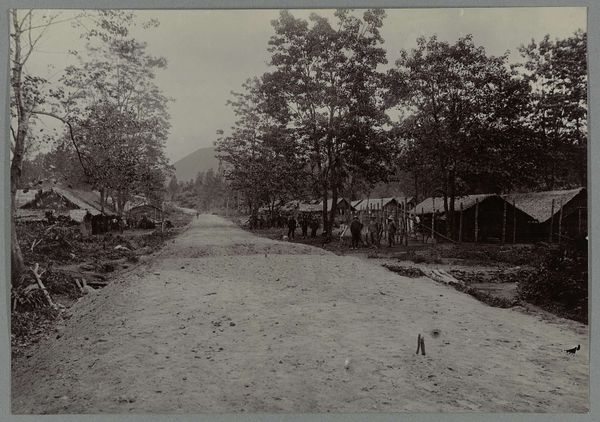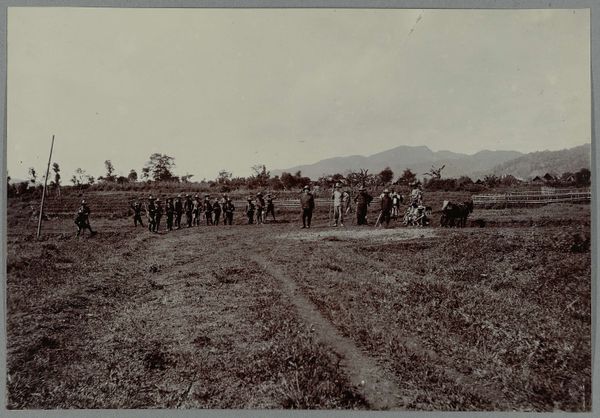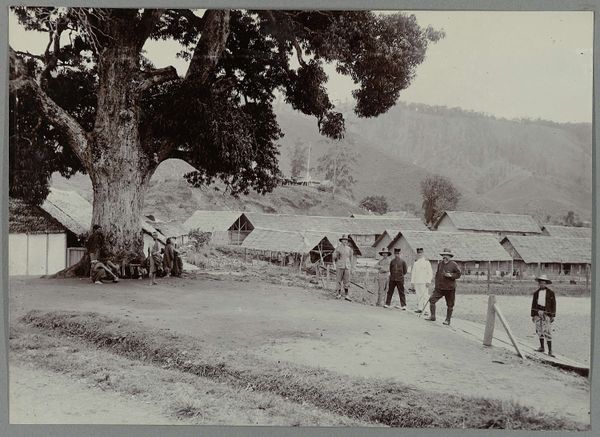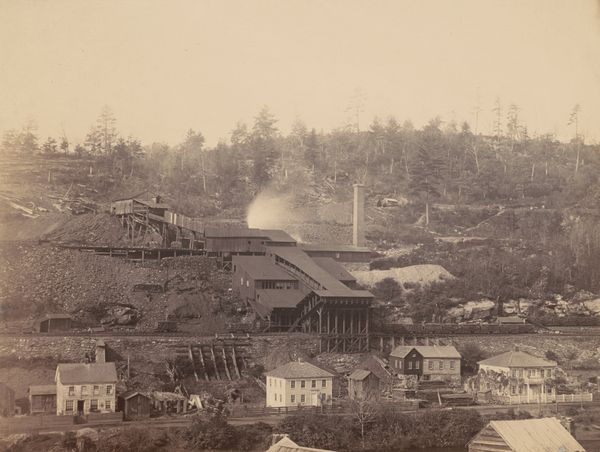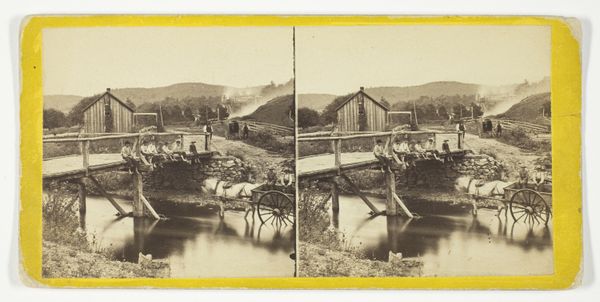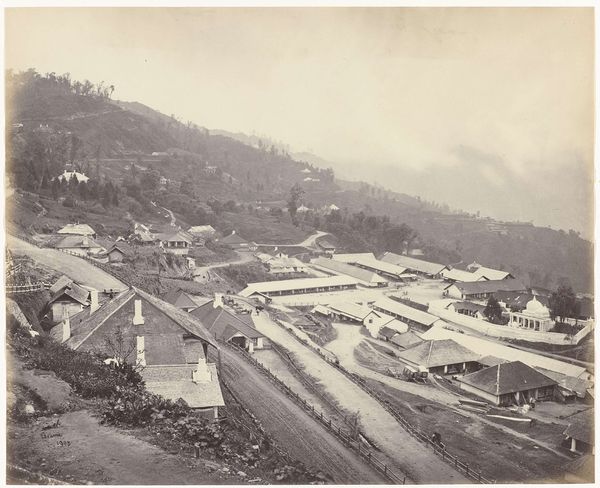
photography, gelatin-silver-print
#
landscape
#
photography
#
group-portraits
#
gelatin-silver-print
Dimensions: height 138 mm, width 200 mm
Copyright: Rijks Museum: Open Domain
Editor: Here we have "Camp Takengon", a gelatin-silver print, most likely from between 1910 and 1913. It shows a group of uniformed figures in what seems like a remote, hilly outpost. I'm struck by how the misty landscape almost swallows the camp itself. What formal elements stand out to you? Curator: What immediately strikes me is the meticulous composition. Note how the photographer utilizes the strong horizontal lines of the architecture, balanced against the diagonals of the rising landscape, thereby creating a dynamic, asymmetrical effect. The repetition of form in the gate and buildings and their textured thatched roofs works with the fog to achieve unity through variety. Editor: Yes, I also noticed the distinct layers created by the buildings, the fog, and the distant hills. What do you make of the figures lined up near the gate? Curator: Observe how they serve as a dark, almost rhythmic, counterpoint to the softer landscape elements, offering visual contrast and accentuating the camp’s structural geometry. How would you define the negative space and what does it tell you? Editor: The upper two-thirds of the photograph are sky, leaving the mountains below without light or clarity. It creates a sense of emptiness and distance. Is this related to what structuralists call the "absent cause" or maybe Derrida's deconstruction theory? Curator: Yes, the emptiness in the sky indeed generates complex interpretation issues that speak to many of our understandings of art. We should note also that while their details are somewhat obscure, their regimented placement gives a structured and measured, one might say controlled, quality to the whole. Editor: It’s amazing how focusing on the formal aspects can reveal so much, even in what seems like a straightforward photograph. Curator: Absolutely. Attending to the relationships between visual elements gives access to deeper meaning in many art forms.
Comments
No comments
Be the first to comment and join the conversation on the ultimate creative platform.
